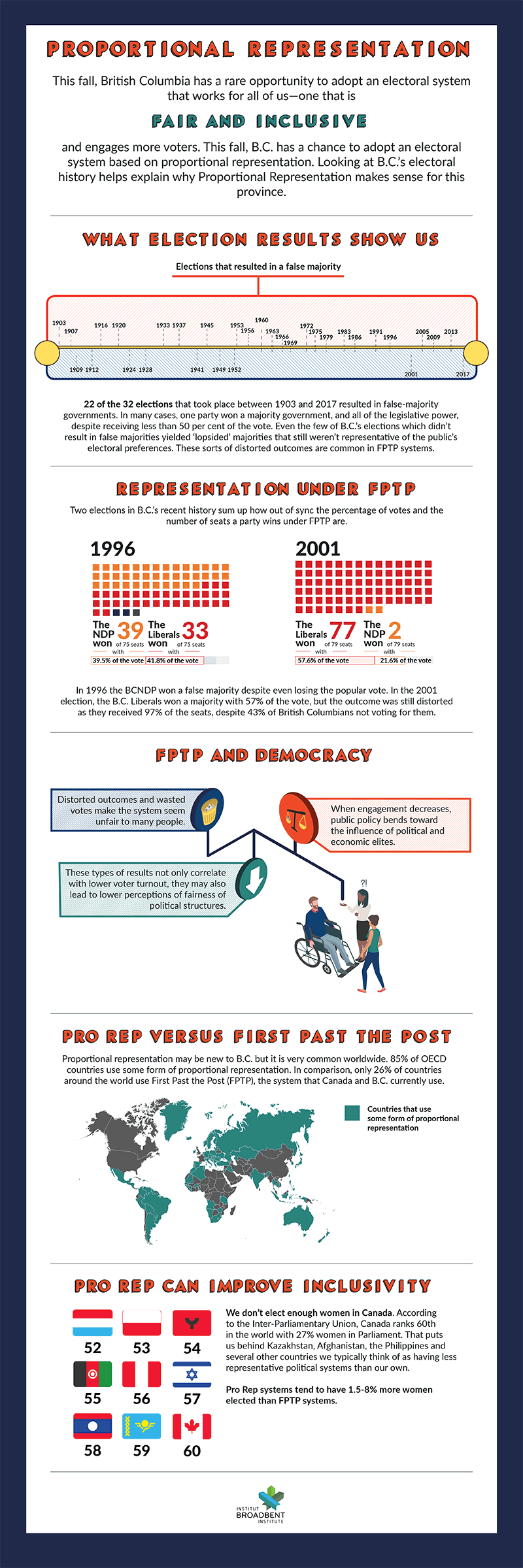This fall 2018, British Columbia has a rare opportunity to adopt an electoral system that works for all of us—one that is fair, inclusive, and engages more voters. This fall, B.C. has a chance to adopt an electoral system based on proportional representation.
Currently, the province uses an electoral system formally known as single-member plurality. As we have for decades, each riding elects a single member to the Legislature, and that member is the person who receives the most votes during the election, whether or not they get a majority.
Most people call this system first-past-the-post (FPTP). The name comes from a reference to horse racing, where the first horse to reach the finish line, or the “post,” wins. It’s a fitting namesake, since the system itself stretches back to the days when we relied on horses and carriages to get around.
Yes, our electoral system in British Columbia is old. Very old. And while there’s nothing inherently wrong with an old system, when it comes to democracy, our needs, expectations, and values have changed a lot since B.C. joined Confederation in 1871. Like the rest of Canada and many former British colonies, we inherited our first-past-the-post system from the United Kingdom. We didn’t choose it. It was chosen for us.
Now, rather than relying on FPTP and defenses like “Well, this is how we’ve always done it!” we can choose an electoral system for the 21st century.

‘An Electoral System for All: Why British Columbia Should Adopt Proportional Representation’ is licensed under CC BY-NC 4.0
